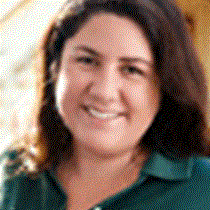Santa Cruz Island
It adds so much to one's experience when one can enjoy a certain area from the other side's perspective. What do I mean by the other side? I mean from the standpoint of those who inhabit a place, from those who work there, from those who do science. And in Santa Cruz Island we had a taste of it all.
Walking along the main road of town we saw kids going to school, hand in hand with their friends or parents, we saw ladies biking around with their shopping bags, and fishermen at Pelican bay cleaning and selling their fish while flamboyantly chatting. At the headquarters of the Galápagos National Park and Charles Darwin Research Station the amazing success of their programs was immediately understood; there was no need for many explanations or talks; it was obvious when we saw the healthy little tortoises that soon will be repatriated to their home islands.
In the afternoon we walked through a unique forest; with wildlife found nowhere else on earth: Scalesia trees, giant tortoises, tree finches. Once on board we had the privilege of getting the visit of the vice-president of National Geographic, who happens to be the inventor of the Crittercam, Greg Marshall. He had been in town, helping the Charles Darwin Research Station with their new project: Use the Crittercam technology in the study of giant tortoises. And, as Lindblad and National Geographic are the same family, Greg came on board to reveal the good news.
Steve Blake, the scientist at the Darwin Centre in charge of this venture, also shared interesting information about his job and the research going on. Our guests were thrilled by this unique opportunity, learning from persons in the field, having such a famous inventor on board.
We celebrated afterwards with music from the islands, with the lights of town in the distance, with our minds awakened by these interesting people and our amazing world of wonders, and eager for more.
It adds so much to one's experience when one can enjoy a certain area from the other side's perspective. What do I mean by the other side? I mean from the standpoint of those who inhabit a place, from those who work there, from those who do science. And in Santa Cruz Island we had a taste of it all.
Walking along the main road of town we saw kids going to school, hand in hand with their friends or parents, we saw ladies biking around with their shopping bags, and fishermen at Pelican bay cleaning and selling their fish while flamboyantly chatting. At the headquarters of the Galápagos National Park and Charles Darwin Research Station the amazing success of their programs was immediately understood; there was no need for many explanations or talks; it was obvious when we saw the healthy little tortoises that soon will be repatriated to their home islands.
In the afternoon we walked through a unique forest; with wildlife found nowhere else on earth: Scalesia trees, giant tortoises, tree finches. Once on board we had the privilege of getting the visit of the vice-president of National Geographic, who happens to be the inventor of the Crittercam, Greg Marshall. He had been in town, helping the Charles Darwin Research Station with their new project: Use the Crittercam technology in the study of giant tortoises. And, as Lindblad and National Geographic are the same family, Greg came on board to reveal the good news.
Steve Blake, the scientist at the Darwin Centre in charge of this venture, also shared interesting information about his job and the research going on. Our guests were thrilled by this unique opportunity, learning from persons in the field, having such a famous inventor on board.
We celebrated afterwards with music from the islands, with the lights of town in the distance, with our minds awakened by these interesting people and our amazing world of wonders, and eager for more.




